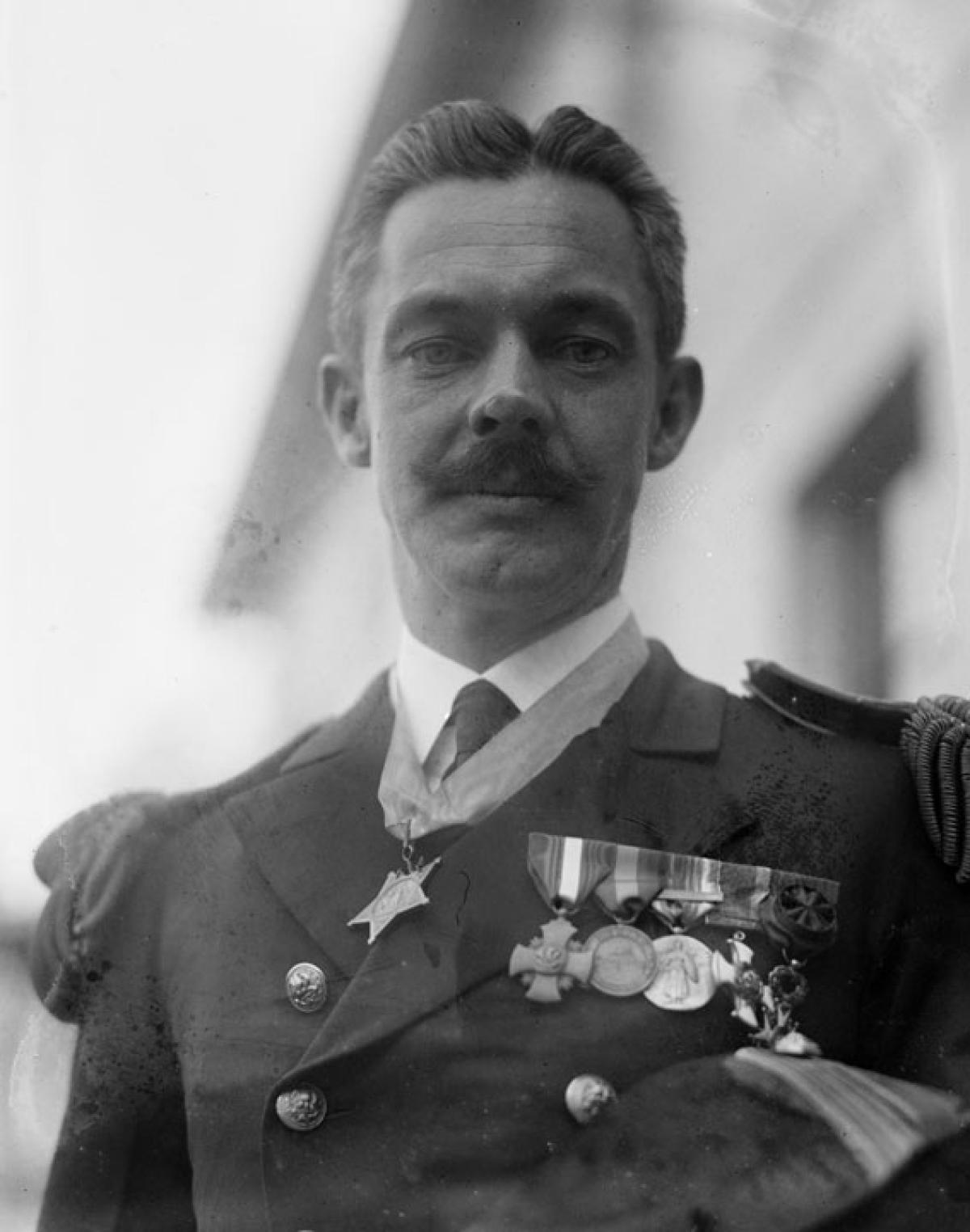Wanting to get a closer look at Russian activities in the Sea of Azov, an extension of the Black Sea that penetrated Russian territory, Vice Admiral Newton McCully embarked in the American destroyer Smith Thompson (DD-212) at Sevastopol on the southern tip of the Crimean peninsula and headed eastward. As the ship entered the narrow Strait of Kerch that connected the two seas, a Russian gun battery opened up, and the first round came dangerously close. The Smith Thompson rang up 25 knots and hugged the western shore of the strait as the Russian batteries continued to fire. Fortunately for the Americans, the Russian gunfire was not sufficiently accurate, and the destroyer entered the smaller sea undamaged.
Completing his reconnaissance mission and with night falling, Vice Admiral McCully decided it was time to leave the Sea of Azov. Rigged for darken ship, the Smith Thompson slipped past the Russian shore batteries, undetected this time, emerging once again into the Black Sea for a return to Sevastopol.
In sharp contrast to current events—that fortunately have not included Russians firing on Americans—this incident took place in 1920, when the U.S. Navy maintained a contingent of warships that operated in the Black Sea, the nearby Aegean, and parts of the eastern Mediterranean. Initially sent to keep an eye on events in Turkey as that nation emerged from the ashes of the Ottoman Empire in the aftermath of World War I, these American ships—mostly destroyers known as “four-pipers” or “flush-deckers”—were based at Constantinople and were sometimes unofficially called the “Black Sea Express,” a deliberate play on the well-known train known as the “Orient Express.”
The sailors serving on this far-distant and exotic station were a long way from Norfolk, Virginia, whence they had come, and it was a time and place of world-changing events that drew the Americans into a variety of operations that would not be unfamiliar to U.S. sailors today. These operations included evacuating from Crimea so-called “White Russians” (those who opposed the Red Bolsheviks in the civil war that followed the Russian Revolution of 1917), participating in relief efforts that brought life-sustaining grain to ports in southern Russia during a terrible famine, and rescuing countless Greek and Armenian refugees from Smryna (today’s Izmir) as it burned in the final days of the Turkish Nationalist Revolution.
A particularly noteworthy operation occurred on the morning of 16 December 1922, as the destroyer Bainbridge (DD-246), commanded by Lieutenant Commander W. Atlee Edwards, transited the Sea of Marmara, the narrow body of water that separates Europe from Asia and connects the Black Sea with the Aegean. Encountering the French transport Vinh Long, lookouts reported smoke pouring from the French ship’s after hatch. As Edwards brought his ship close aboard to assist, an explosion sent the Vinh Long’s after mast hurtling skyward like a javelin thrown by a giant. Despite reports that the French ship was loaded with gunpowder, the intrepid captain brought the Bainbridge alongside to rescue the hapless souls, many of them women and children.
When a second explosion parted all the lines holding the ships together, Edwards, still undaunted, backed off 100 yards and then ordered full speed ahead, telling his helmsman to aim for the burning ship. The Bainbridge crashed into the Vinh Long, wedging herself sufficiently to allow a forecastle-to-forecastle transfer of nearly 500 would-be victims. For his heroism, Edwards was subsequently awarded both the Medal of Honor and the French Legion of Honor.
The Black Sea Express remained on station until October 1923, when the Ottoman Sultan abdicated and the emergence of a nationalist Turkey obviated the need for the American ships.
Note: Derived largely from Robert Shenk’s America’s Black Sea Fleet (Naval Institute Press, 2012.)



